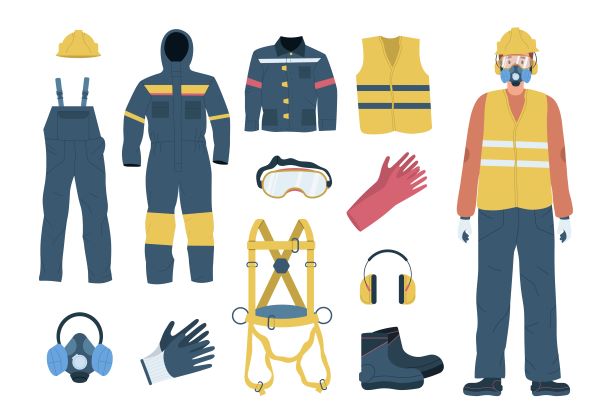Flame-Resistant Protective Gear: A Guide From Experts
Protective gear is an essential tool for many professionals, especially those working as firefighters and electricians. You need high-quality, specially engineered fire-resistant clothing to protect you from burns. If your daily duties involve dealing with flash fires, electric arcs, combustible dust, and so on, flame-resistant protective gear is needed.
FR protective clothing allows you to take up potentially dangerous tasks, and run into fire just like the lead of an action film. Flame-resistant clothing refers to protective gear specially designed to protect you from fire and thermal injuries. FR clothing can protect you against ignition, and self-extinguishes once the ignition is removed. Therefore, FR clothing protects you not only from initial exposure to flames but also from residual heat transfer.
Flame-resistant clothing is becoming a need for many professions including fire service, research in labs, and electrical services. People who work with oil and gas also require FR clothing. These jobs often expose you to thermal incidents such as explosions and open fires. Therefore, it is essential to dress accordingly, to keep yourself safe from flames. This blog will act as an all-encompassing guide to fire-resistant clothing so that you can remain safe and stylish.
Flame-Resistant Protective Gear: What is It?
As we know, a lot of fabrics ignite, burn, and melt when exposed to fire or an explosion. Textile fires like this cause a lot of injuries and burns, which are more intense than the initial incident.
Fire-resistant protective gear is less likely to catch fire or melt when exposed to high temperatures, or combustion. When the ignition source is removed, the fabric self-extinguishes to keep the wearer safe. The wearer can minimize damage and escape just in time, although FR clothing can burn if exposed for a long time.
Flame-Resistant Clothing: Types, Styles, and Substance
Personal protective equipment (PPE) can be used for a variety of dangerous professions. You can get protective gear in a variety of stylish clothes, such as coveralls, bomber jackets, overalls, and high-visibility jackets. Based on your preferences you can also get FR clothing in balaclavas, face mufflers, and lab coats.
There are ranges of FR garments, some for those constantly exposed to risk and others for intermittent danger. Before you invest in FR protective gear, it is important to find out whether you need primary or secondary protection.
Newer innovation allows for FR clothing that is not bulky and unfashionable. You can even find FR jeans, polos, t-shirts, shirts, and hoodies that are designed to protect your body and your image. However, lighter garments are more likely to offer low levels of protection. To build up on the protection factor, you can layer lighter, stylish garments with a jacket or a coverall.
It is important to choose flame-resistant clothing in a larger size for a slightly baggy fit. Skin-tight clothing often transfers heat faster to the skin, leading to burns and injuries. You need a layer of air between your skin and clothes that is offered by loose-fitting clothes. This increases the garment’s protective qualities because it helps to insulate the wearer.
Flame-Resistant Protective Gear: Limitations and Drawbacks
FR protective gear, are crucial pieces of PPE, but they are not fireproof. In an extreme setting, they will catch fire, but they won’t melt. However, they can burn for a while which exposes the wearer to serious injuries.
Here are some tips on how to ensure that FR clothing is as safe as possible
- Choose FR clothing of the correct standard. The minimum arc rating for HRC1 is 4, and HRC2 is 8. Similarly, the minimum arc rating for HRC3 is 25 and HRC4 is 40.
- Layer FR protective gear to protect yourself from potential hazards. If the top layer of clothing is burned or damaged, you can expect lower layers to stop heat and flames from reaching the skin. Layering flame-resistant clothing can protect against burns and injuries.
- Wear synthetic clothes under FR clothing is highly dangerous because they are flammable. Avoid wearing synthetic t-shirts, and undergarments, because they can melt onto your skin, and cause serious burns and injuries.
- Wear appropriate clothing so that it doesn’t catch on fire or melt.
Flame-resistant gear cannot protect you against projectiles, explosive forces, and other hazards you may face at work. You need to take precautions and wear the correct PPE for every situation, especially if your job requires you to be exposed to hazards. PPE needs to be flame-resistant, to truly protect you from buns and injuries at work.
Wrapping Up: Quality Flame-Resistant Protective Gear
PPE needs to be sourced from trusted retailers who ensure your safety at work. The overalls, balaclavas, jackets, and mufflers need to protect the wearers in case of thermal incidents. Unito is a recognized and trusted manufacturer providing daily-wear, quality-assured PPE.
The arc rating of each garment is mentioned on the label of Unito’s clothes. We also communicate any necessary information about materials used to buyers. Professionals need to understand the protective properties of their flame-resistant garments. This will help professionals protect themselves in their jobs by using the correct PPE.
We hope this blog helped you understand flame-resistant protective gear and how to shop for it. Visit Unito’s website for more help and options.
Follow us on:
Facebook | Instagram | LinkedIn | Twitter | Google My Business




